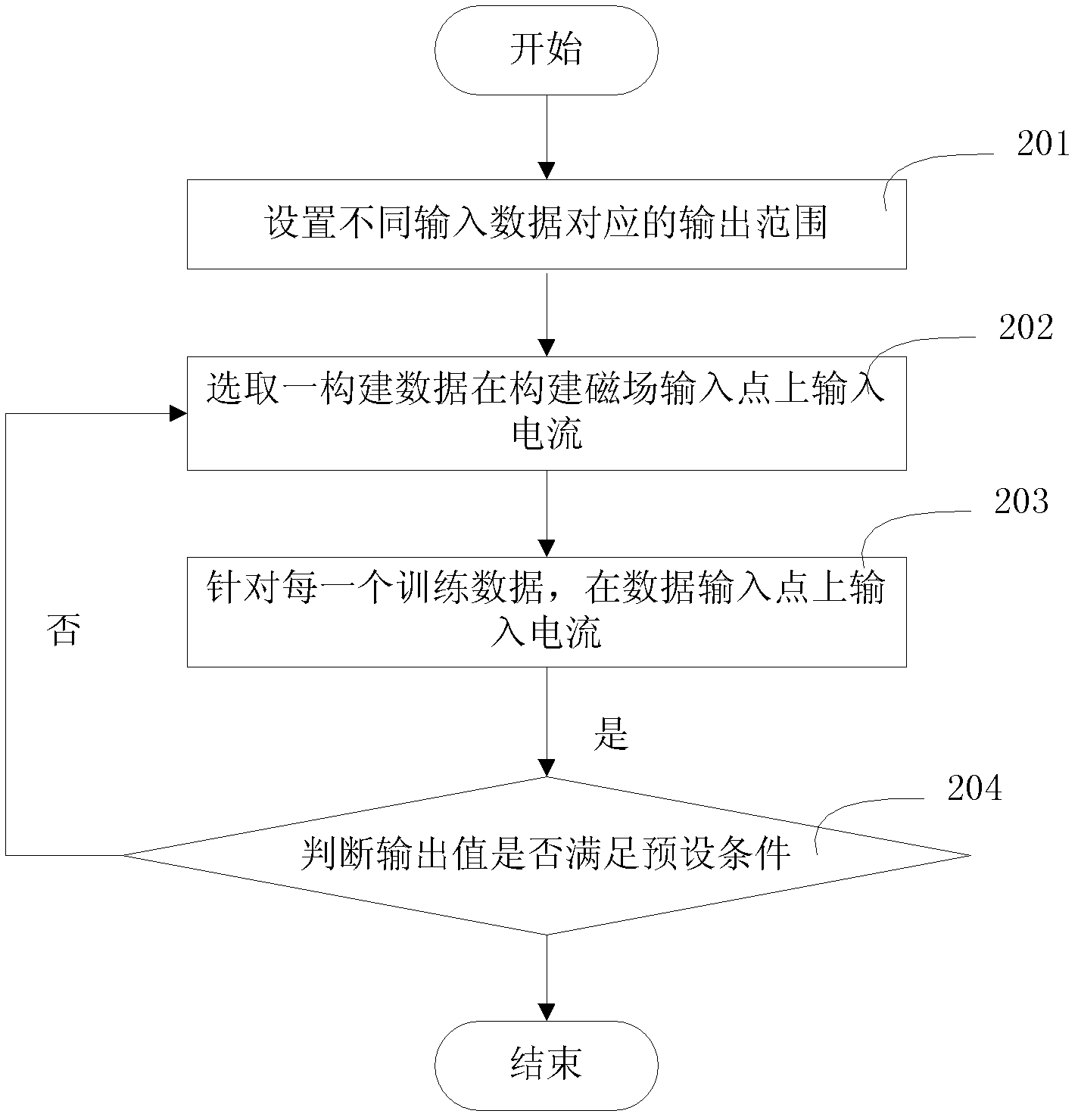Method for realizing data classification of simulation-field computer on basis of magnetic field
A data classification, computer technology, applied in computer parts, calculation, character and pattern recognition, etc., can solve the problems of low efficiency, low classification efficiency, slow digital computer speed, etc., to achieve high speed, fast processing speed, nonlinear good effect
- Summary
- Abstract
- Description
- Claims
- Application Information
AI Technical Summary
Problems solved by technology
Method used
Image
Examples
Embodiment Construction
[0034] The present invention will be further described in detail below in conjunction with the drawings.
[0035] The invention is based on the magnetic field to realize the computer data classification method of the analog field, which is used for analyzing the Ψ k obtained in the pattern recognition process. 1 Dimensional data Q i [k 1 ] For classification, where i=1, 2……Ψ, and Q i [k 1 ] Contains A type of data.
[0036] Step 1. Select M on the magnetic film 1 ×M 2 Set the probe vertically at each point; such as figure 1 As shown, it is better to select M 1 =M 2 , And the distance between every two adjacent points is equal, M 1 ×M 2 The dots form a rectangular array. Select k from the set of probes 2 Probes are used as the input points to construct the magnetic field, select k 1 One probe is used as the data input point, and one probe is selected as the data output point; among them, the constructed magnetic field input point, the data input point, and the data output point are ...
PUM
 Login to View More
Login to View More Abstract
Description
Claims
Application Information
 Login to View More
Login to View More - R&D
- Intellectual Property
- Life Sciences
- Materials
- Tech Scout
- Unparalleled Data Quality
- Higher Quality Content
- 60% Fewer Hallucinations
Browse by: Latest US Patents, China's latest patents, Technical Efficacy Thesaurus, Application Domain, Technology Topic, Popular Technical Reports.
© 2025 PatSnap. All rights reserved.Legal|Privacy policy|Modern Slavery Act Transparency Statement|Sitemap|About US| Contact US: help@patsnap.com



